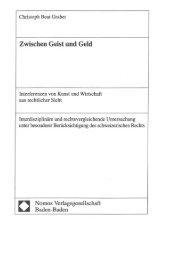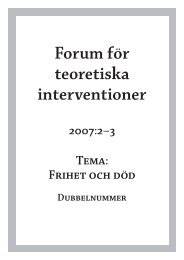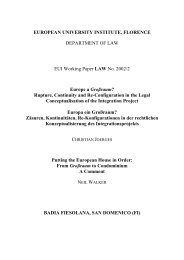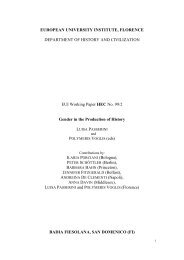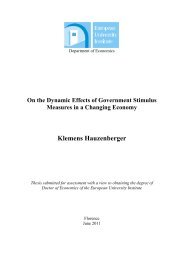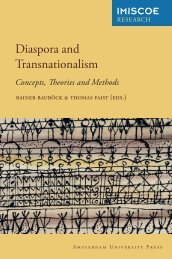Sinziana-Elena Poiana Ioana Lupea Irina-Madalina Doroftei Alina ...
Sinziana-Elena Poiana Ioana Lupea Irina-Madalina Doroftei Alina ...
Sinziana-Elena Poiana Ioana Lupea Irina-Madalina Doroftei Alina ...
Create successful ePaper yourself
Turn your PDF publications into a flip-book with our unique Google optimized e-Paper software.
perfomed by Csibi Barna is also "metonymic", in the sense described by Gitens Mazer: "using one<br />
entity to refer to another that is related to it and aiding in the social determination what events from the<br />
past are important" (Githens Mazer, 2007). The performance was related metonymically to the<br />
autonomy of Szekler Land, a region who existed as a legal entity in the medieval times, and by virtue<br />
of the right to “full national freedom for all co-inhabiting people", promised to the minorities in 1918.<br />
The reason for which Csibi Barna’s action on Hungary’s National Day had such an impact on the<br />
public is highly dependent on the choice of the "victim": the Romanian national 1848 revolutionary<br />
Avram Iancu. He was a fighter for the rights of Romanians from Transylvania during the revolution of<br />
1848, a traumatizing moment for both communities involved in a direct conflict, that made many<br />
victims among the civilians as well, and that was used by Romanian and Hungarian politicians in their<br />
struggle to construct a more convincing identity profile of the community they were addressing. After<br />
the revolution of December 1989, Tebea, the city where he was buried, was a place of pilgrimage for<br />
Romanian politicians. Their presence at the commemoration of Avram Iancu is a test of patriotism and<br />
a rite of legitimacy as Romanian true patriots.<br />
Avram Iancu is a historical character turned into myth for ideological reasons, and both Romanians<br />
and Hungarians know him from the history school books, folklore and the political propaganda. The<br />
Hungarians in Transylvania have more information on the 1848 revolution due also to the fact that<br />
Hungary's National Day is the anniversary of March 15th, 1848, while Romanians know only their<br />
legendary hero Avram Iancu (Mungiu-Pippidi, 1999). For the average Hungarian, he was a traitor of<br />
the 1848 Revolution in favor of imperial interests (Mungiu-Pippidi, 2000). Thus, Csibi Barna justified<br />
his choice of Avram Iancu: "He was the leader of the hoards of criminals who ethnically cleansed<br />
Central and Southern Transylvania, the carnages in Aiud, Roşia Montana, Abrud, Zlatna are<br />
thoroughly presented in his written memoires" (Csibi Barna’s interview). Csibi Barna's opinion is not<br />
singular. At a City Council meeting in Miercurea Ciuc, Zoltan Szondy Hungarian Civic Party<br />
councilor conducted an investigation related to the symbolic hanging of Avram Iancu by Csibi Barna.<br />
The councilor said that although most Romanians felt offended by what Mr. Barna had done, it must<br />
be said that this is not a matter of opinion because "Avram Iancu was a criminal", as the Hungarianlanguage<br />
newspaper the Szeklerhon.ro reported (apud ziare.com).<br />
The Romanian folklore mentions Avram Iancu as the "little prince of the mountains", as he was<br />
praised in popular songs, one of which is today a jingle in the Transylvanian railway station. The<br />
National Bank of Romania issued a banknote with Avram Iancu’s portrait on one side. Avram Iancu<br />
was also included, on political grounds, in the national pantheon by King Ferdinand, the ruler who<br />
unified the Romanian state, and later by the fascist legionary movement during the period between the<br />
two world wars, by national Communists, and by the Transylvanian nationalist parties after the<br />
revolution of December 1989 (Boia, 1997). In the early 90s, Avram Iancu’s character was subject to<br />
one of the most important political and media confrontations that took place in Cluj, a city from<br />
Transylvania inhabited by Romanians and Hungarians. The former mayor of Cluj, Gheorghe Funar, an<br />
outspoken nationalist, raised in 1993, in the middle of the town which was then dominated by the<br />
statue of the King of Hungary, the Transylvanian Matthias Corvinus, a huge Avram Iancu statue, with<br />
an inscription saying that 40.000 Romanians were killed during those battles suggesting that they were<br />
killed by Hungarians (Mungiu Pippidi, 2000).<br />
All interviewed persons agreed that the image of Avram Iancu hanged stirred many emotions. "Avram<br />
Iancu is a historical character, revealed to Romanians as national myth since the secondary school.<br />
The history books from primary school do not describe him as a real character (this does not happen<br />
only in Romania). Thus, Avram Iancu is not perceived in Romania at his actual historical dimension,<br />
but as the hero icon. Any nation is built on a story where the main roles are played by true heroes.<br />
Avram Iancu is such hero" (Vlad Mixich, journalist, interview). "Avram Iancu's hanging would have a<br />
public impact almost as great even if it was made by a Romanian. In the collective memory, Iancu is a<br />
fighter, a hero, a savior. History textbooks do not explain too clearly why he would be a hero. Legends<br />
were given more weight in textbooks, but the facts could possibly consecrate him as a defender of the<br />
66



